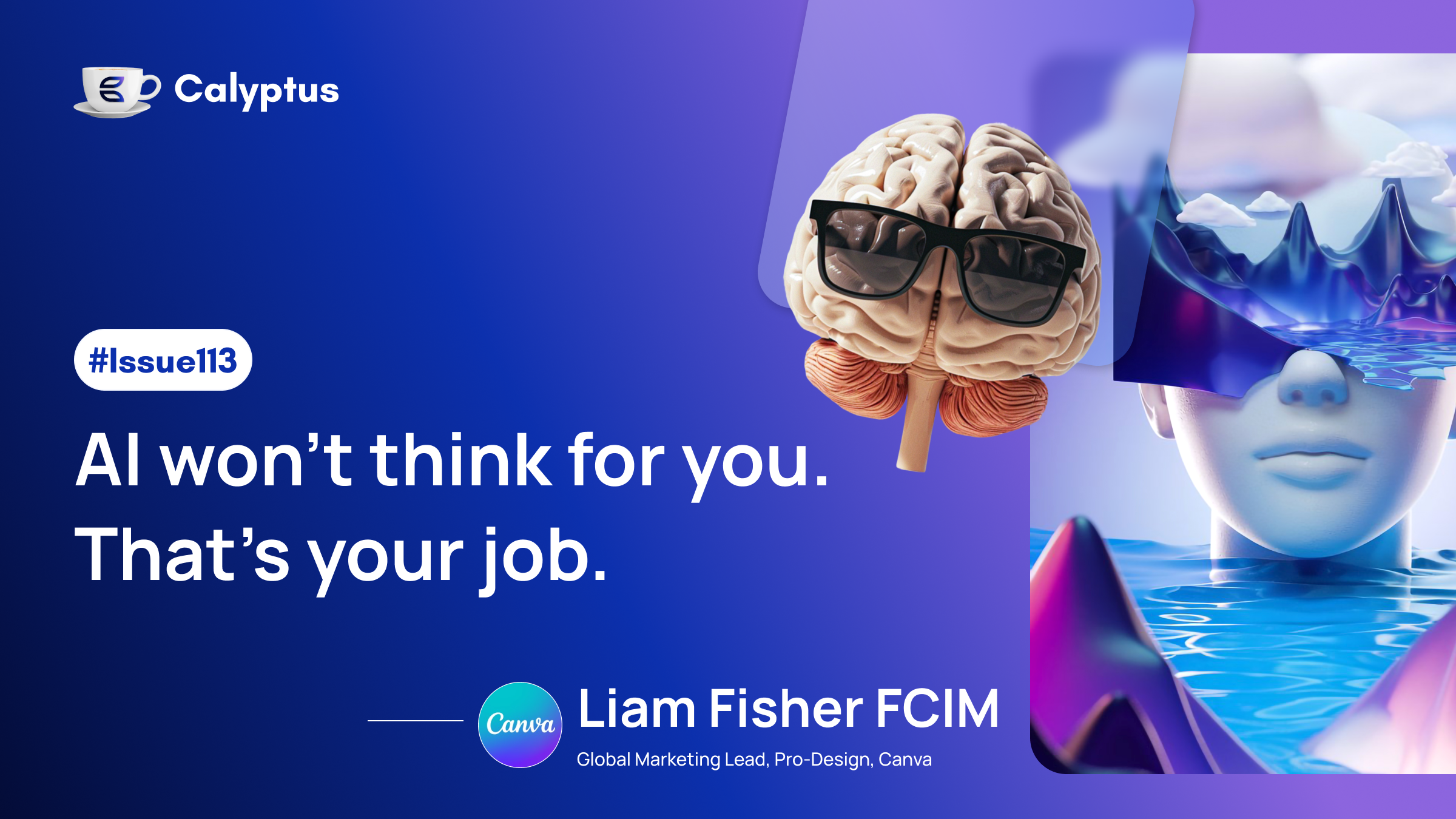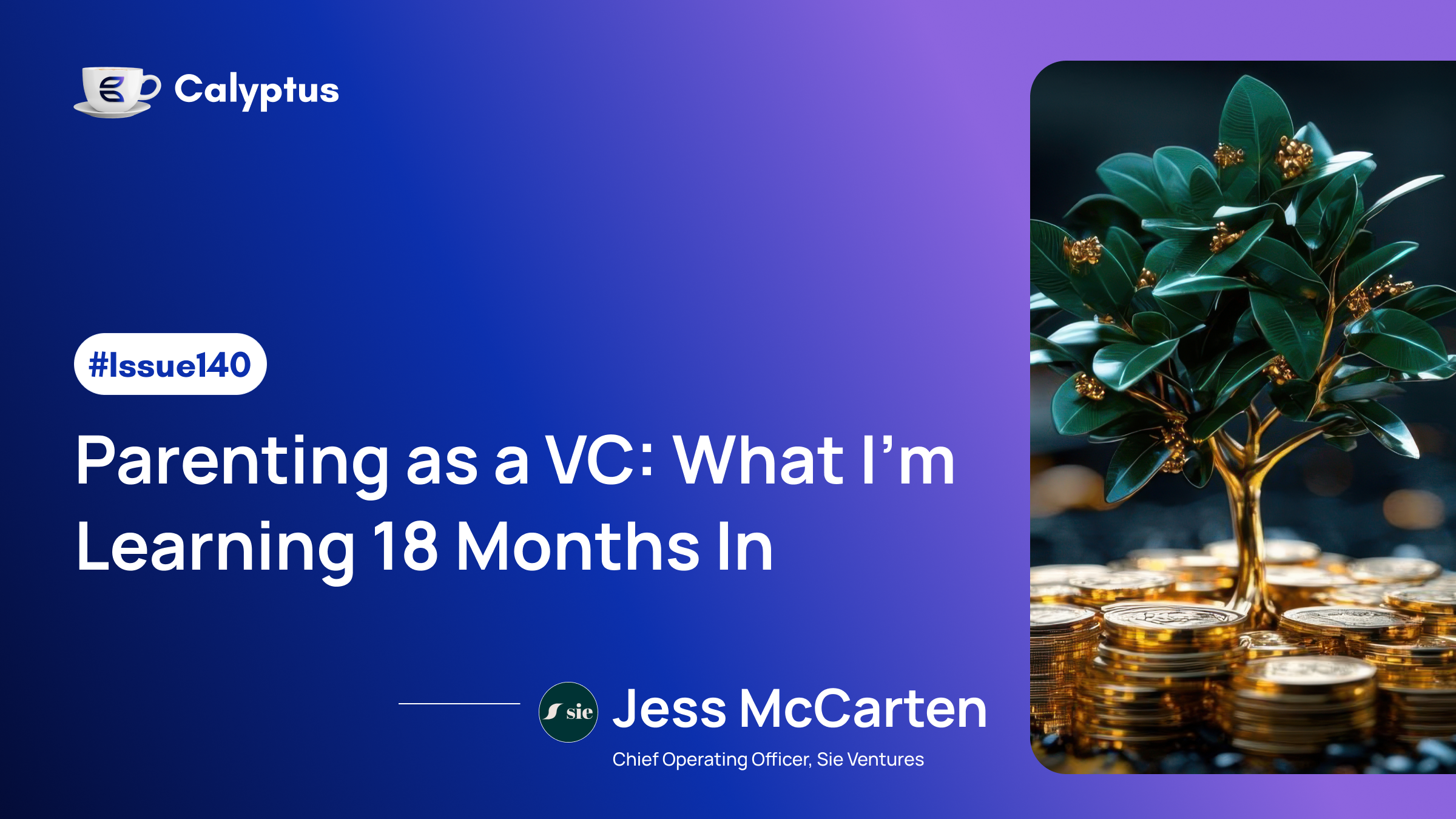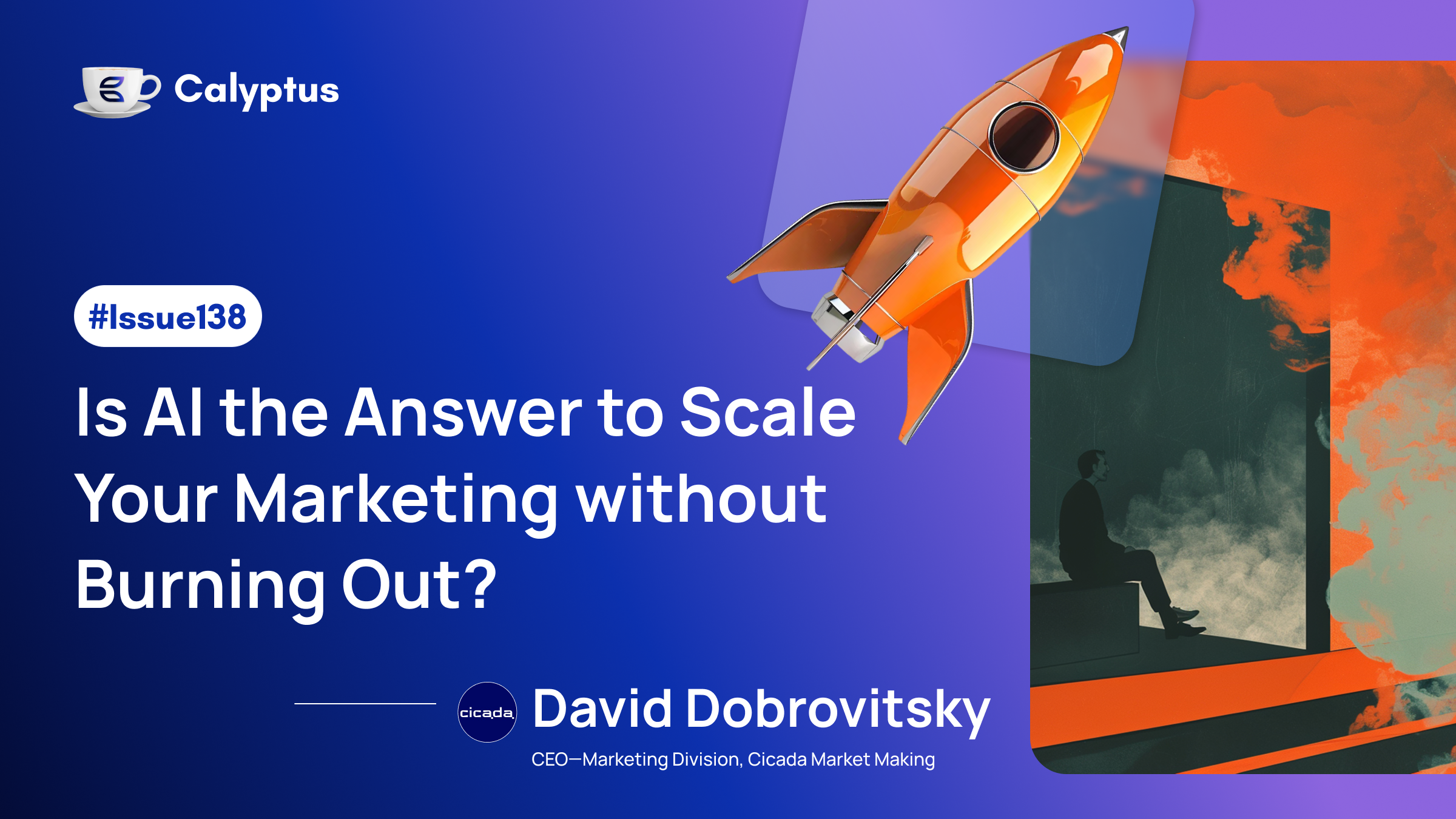This week on Coffee with Calyptus, we’re joined by Liam Fisher FCIM, Global Marketing Lead, Pro-Design at Canva. From edtech to advanced design software, Liam’s led global marketing with one unshakable principle: empathy. Whether engaging five-year-olds or seasoned creatives, he shows how clarity, usefulness, and storytelling grounded in truth build trust, and scale.

You’ve led global marketing from edtech for children to professional design software at Canva. What’s been the common thread in how you approach engaging such wildly different audiences?
At first glance, it looks like they couldn’t be more different. But underneath, the fundamentals stay the same. Whether it’s a five-year-old learning to read or a professional designer pushing pixels for a living, people want the same things from a product: clarity, purpose, and the sense that it’s been built with them in mind.
I’ve always started with empathy. Really trying to understand the person on the other end. That shows up in the work. With kids and parents, we kept it joyful and friction-free. With pro designers, the focus shifts to precision and trust. But in both worlds, you earn attention by being useful and earn loyalty by being honest.
So the thread through it all is this: meet people where they are, listen properly, and speak their language. That works, regardless of the audience.
At Affinity, now part of Canva, you’re serving a highly skilled design community. How do you balance brand storytelling with product performance to win trust in that space?
You don’t get to talk your way into this community. You have to earn your place.
Most designers I’ve met care more about what the product does than what you say about it. So we let the tools speak for themselves. Speed, precision, value for money. Those things matter. But there’s also a deeper layer to it. Why are we doing this? Why does Affinity even exist inside Canva? That’s where the story matters.
We’ve built a narrative around fairness, freedom, and creative independence, and that’s resonated. But the trust only holds if the product lives up to it. So we don’t treat storytelling and performance as two separate tracks. They support each other. The story brings people in. The product keeps them here.
You helped take “Teach Your Monster” to millions of kids each month. What did working in education teach you about simplicity, reach, and scaling a global brand?
That job made me a better marketer, full stop.
When you're designing for kids, you have zero margin for confusion. If something doesn't work, they’re gone. You learn very quickly how to get to the point, make it delightful, and remove anything that doesn't need to be there.
We also had to scale on a tight budget, which meant leaning heavily on trust. Parents and teachers were our best channels. We gave them something worth sharing, and they did the rest. No gimmicks, just good product, clear messaging, and word of mouth. It also taught me not to overcomplicate things. That lesson’s stuck with me ever since.
What’s the most exciting thing happening at Canva today that you most want to shout about?
Honestly, I’d say it’s having Affinity in the Canva family. Affinity is a suite of professional creative tools used by millions of designers around the world. Photo editing, vector design, layout with best-in-class performance, and it’s trusted by people who care deeply about craft. What’s exciting is seeing that depth of creative capability now sitting inside a company like Canva, which has always been about accessibility and scale. It’s a rare opportunity to bridge both worlds. To learn from one another. And for me personally, to help amplify a product that’s genuinely respected by working creatives. That’s a pretty exciting place to be.
As a marketing leader working at the intersection of creativity and data, how are you using AI today, and where do you think it truly adds value versus just creating noise?
For us, AI is a tool. Nothing more, nothing less.
We use it where it helps. Speeding up early drafts. Summarising insights. Spotting patterns we might have missed. It’s made our workflows sharper and given the team more breathing room. But it only works when there’s a clear intention behind it.
The minute it becomes filler or starts replacing human judgment, the quality drops. You can feel it in the work. It’s fine to move faster, but not if it means losing the soul of the thing.
So we use it carefully. Not just to save time, but to give the team more space to do the thinking, writing, and creating that actually matters.
We hope you enjoyed this edition of Coffee with Calyptus. Stay curious, stay inspired, and keep building what matters. Explore more editions and insightful articles at https://www.calyptus.co/blog.




